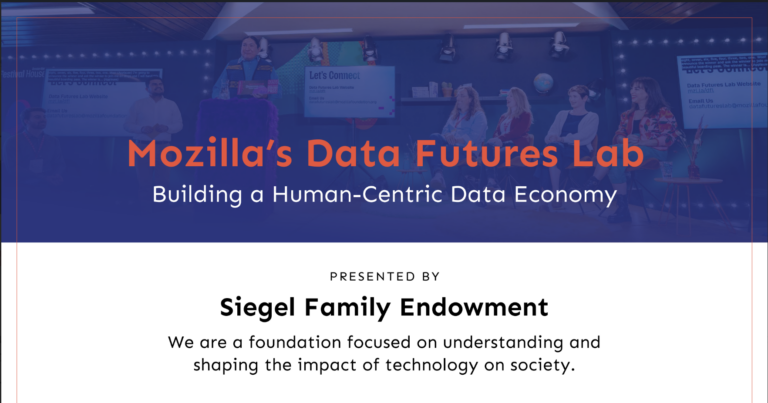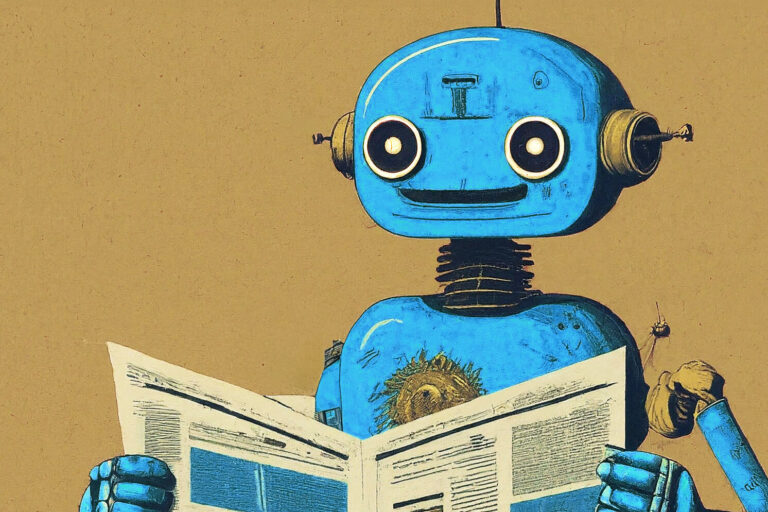In a world that’s shaped by widespread, technology-driven change, many conversations about the future of infrastructure tend to be dominated by whatever is newest and most groundbreaking. But what about the networks of powerful infrastructural assets that already surround us, many of which are rapidly decaying? And what can we do to ensure that new networks and innovations are built to be resilient and long-lasting?
It can be easy to lose sight of just how much work goes into keeping existing infrastructure and community assets up and running. At Siegel Family Endowment, we’re just as interested in groundbreaking new work as we are in stewarding existing resources effectively and impactfully. That’s why we’re developing partnerships with organizations like The Maintainers, who are taking this challenge on directly by developing strategies for stabilizing our relationship with technology as a society, and recognizing the urgency of keeping up the infrastructural resources we already have – from roads, bridges, and tunnels, to broadband networks, to tablets in classrooms, and more.
The Maintainers are a global research network interested in the concepts of maintenance, infrastructure, repair, and the myriad forms of labor and expertise that sustain our human-built world. As their name implies, they advocate for maintaining, updating, and taking care of our physical, social, technological infrastructure assets. They also develop guidance for leaders in decision-making and resource-distributing roles to help them make better investments and develop that will positively impact more people, and be more effective in the long term. As they expand their work efforts in the weeks and months ahead, The Maintainers are prioritizing a core set of principles and mindsets that organizations of all kinds can use to reframe the way they think about maintenance and celebrate those whose oft-overlooked job it is to keep our world running.
“The Maintainers are thrilled to partner with Siegel Family Endowment to increase our organizational capacity for building the movement for maintenance thinking and action. In 2021, we look forward to advancing our model for community-based research, learning more from our Maintenance Communities about interventions in different spheres of maintenance work, and pursuing interdisciplinary research with colleagues ranging from evolutionary psychology to labor economics. We encourage readers to join our listserv and attend any of our upcoming virtual events”
Fix it first. Rather than defaulting to thinking only about new infrastructure projects, it’s important to address “infrastructural debt” by cataloguing and addressing neglected and poorly-maintained infrastructure in the world around us. It’s important to understand what can be fixed or brought into working order with a little upkeep or repair, and addressing that before starting a new effort from scratch.
Know what kinds of resources are needed for different kinds of maintenance. Infrastructure planning incentives are typically weighted in favor of altogether new programs, but making room for ongoing maintenance and upkeep can lead to long-term cost savings. Knowing exactly what it will take to make a certain kind of fix or update is a key to preventing duplicative or needlessly expensive infrastructure development.
Make maintenance and maintainers visible. The COVID-19 pandemic has forced us to focus on understanding and defining what constitutes “essential work.” We could just as easily call essential workers “maintainers,” because they are responsible for keeping all of our physical, social, economic, and digital infrastructure systems running. We don’t tend to notice our infrastructure when it’s working seamlessly, but that overlooks all of the labor that goes into keeping those systems operational. While the vast majority of the world’s population shelters in place, essential workers proceed to do their jobs and the world celebrates them. This level of recognition for maintenance and maintainers should be extended beyond the pandemic, and be compensated in a way that accurately reflects its value.
There isn’t a lot of glory in maintenance, but it’s one of the most important ways to keep our society functioning as smoothly as possible. The Maintainers recognize this, and we’re pleased to be working with them as they continue growing the community of maintainers, and advocating for more thoughtful infrastructure planning processes.
To learn more about The Maintainers, visit their website, read their articles, and go deeper with their new book, “The Innovation Delusion.”





